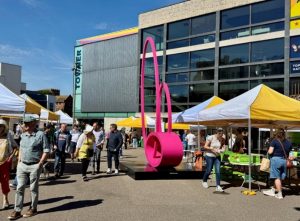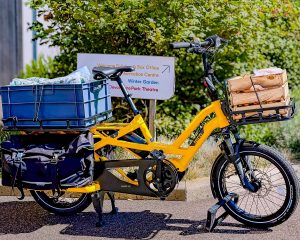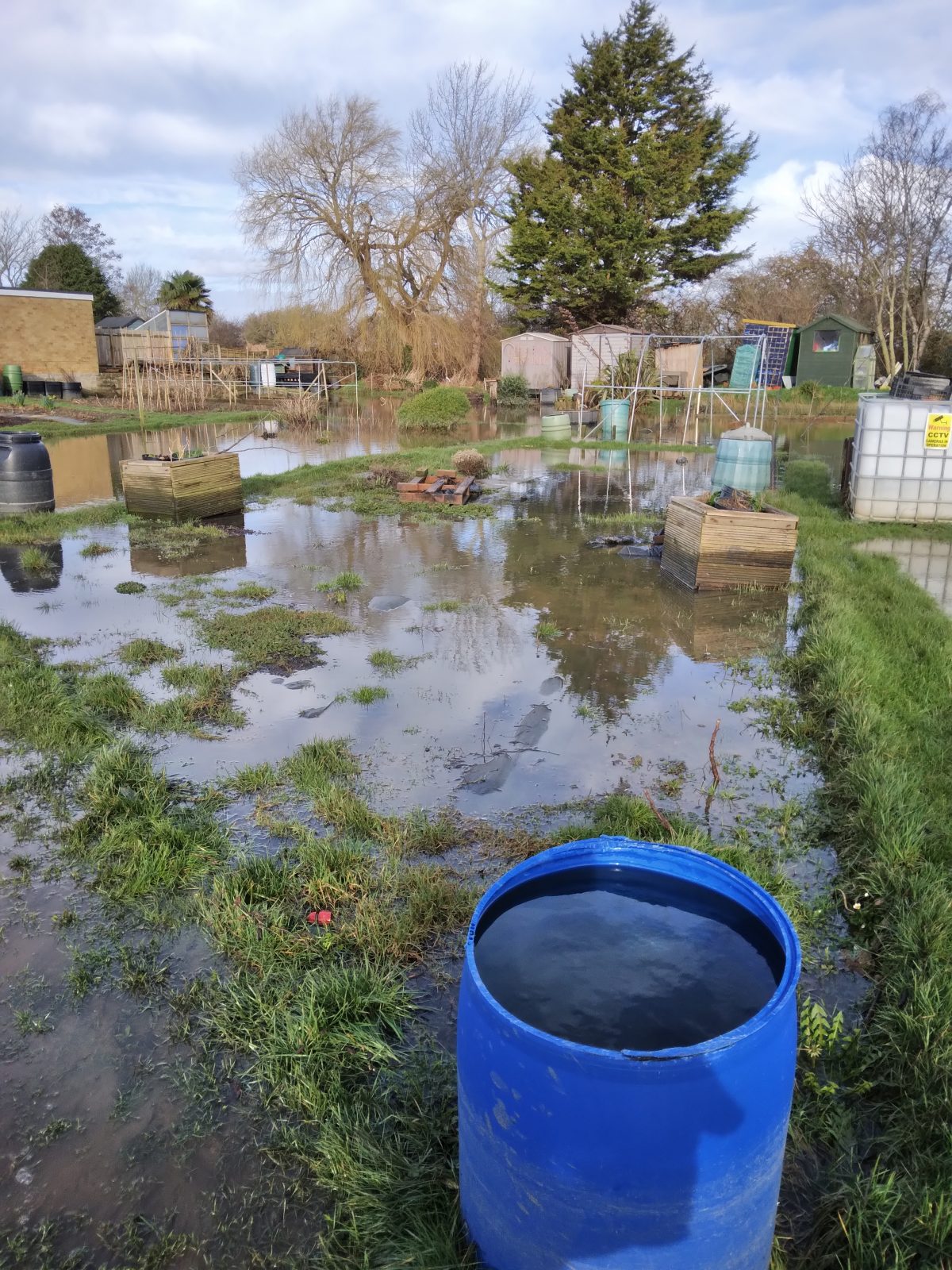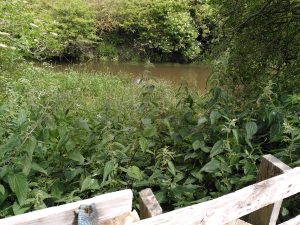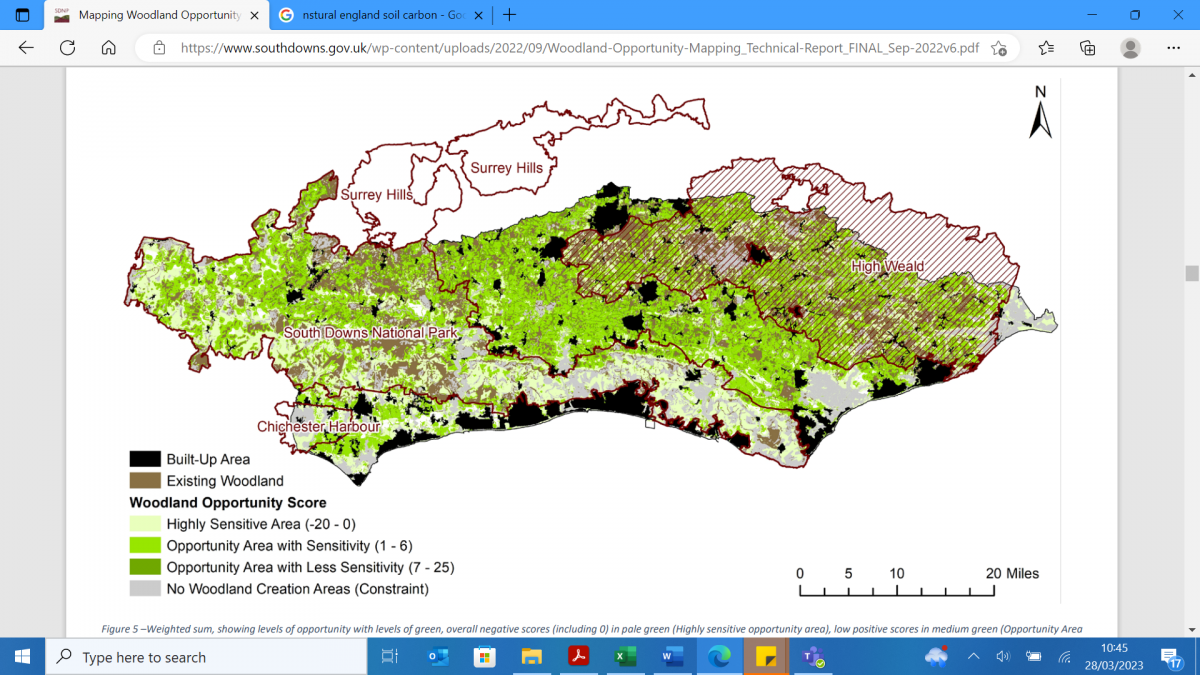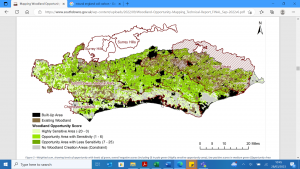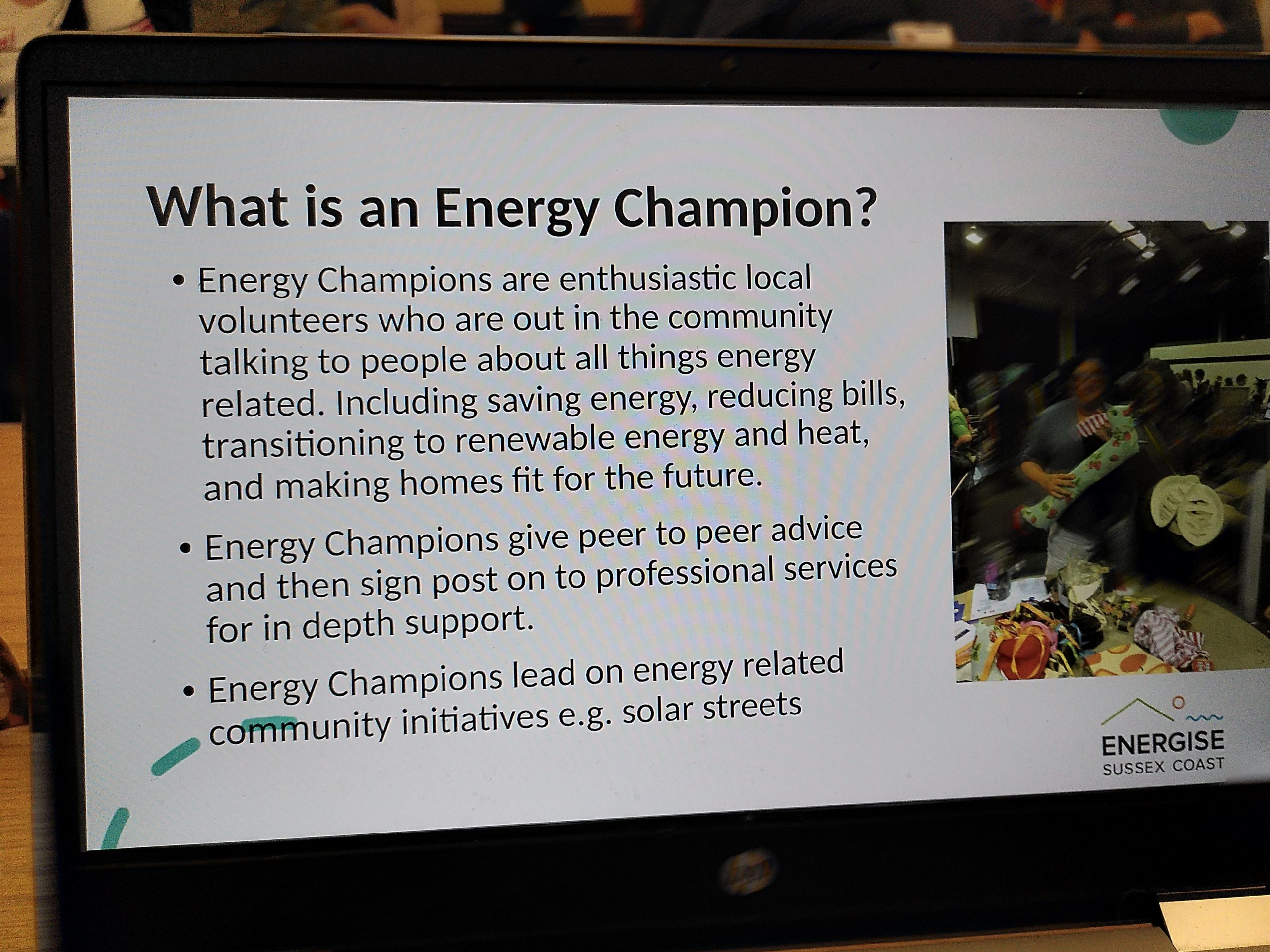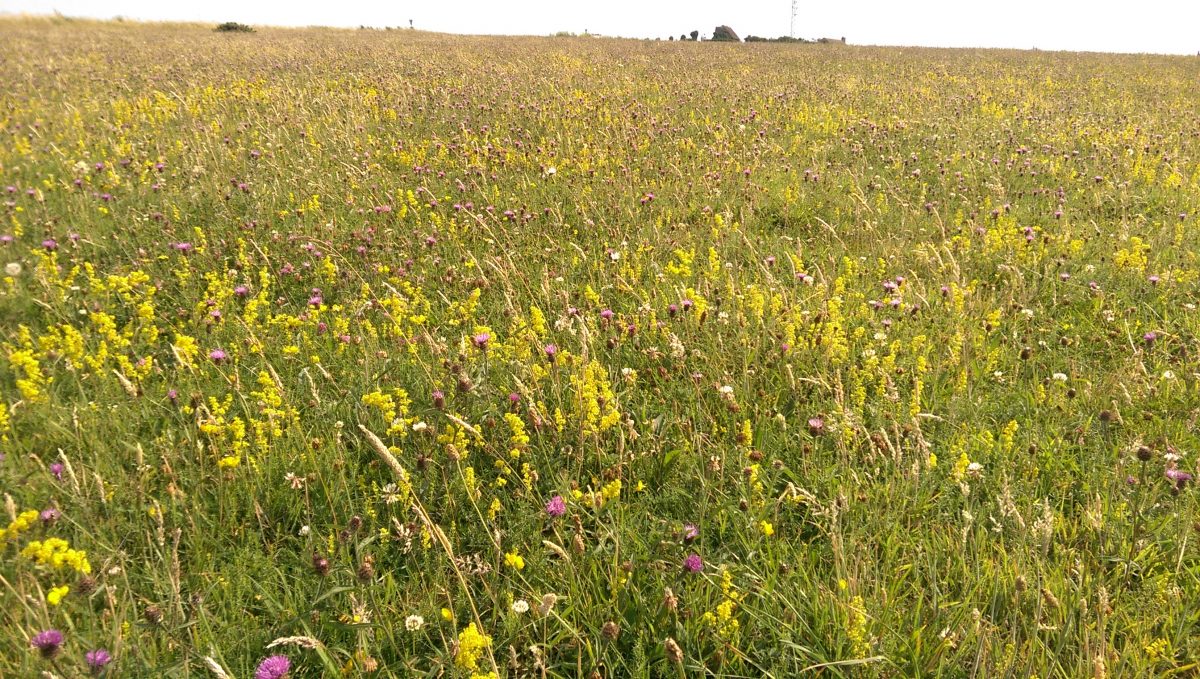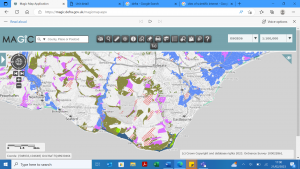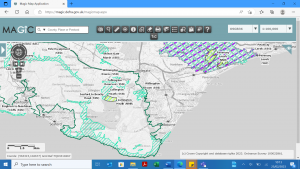The Eastbourne Farmers Market: Rebuilding local food connections
By Sam Powell
Between supermarket self-checkouts and plastic-wrapped vegetables flown in from thousands of miles away, many of us have lost touch with who grows our food and how it reaches our plates. Eastbourne’s new farmers’ market is reviving an old but refreshing idea — connecting buyers directly with growers and local artisan producers.
In this article, we catch up with Miles Berkley and Andrew Durling – who have volunteered this year with both the Eastbourne Eco Action Network and the Eastbourne Food Partnership – to see how the market is coming along and what really sets the new Eastbourne Farmers Market apart.
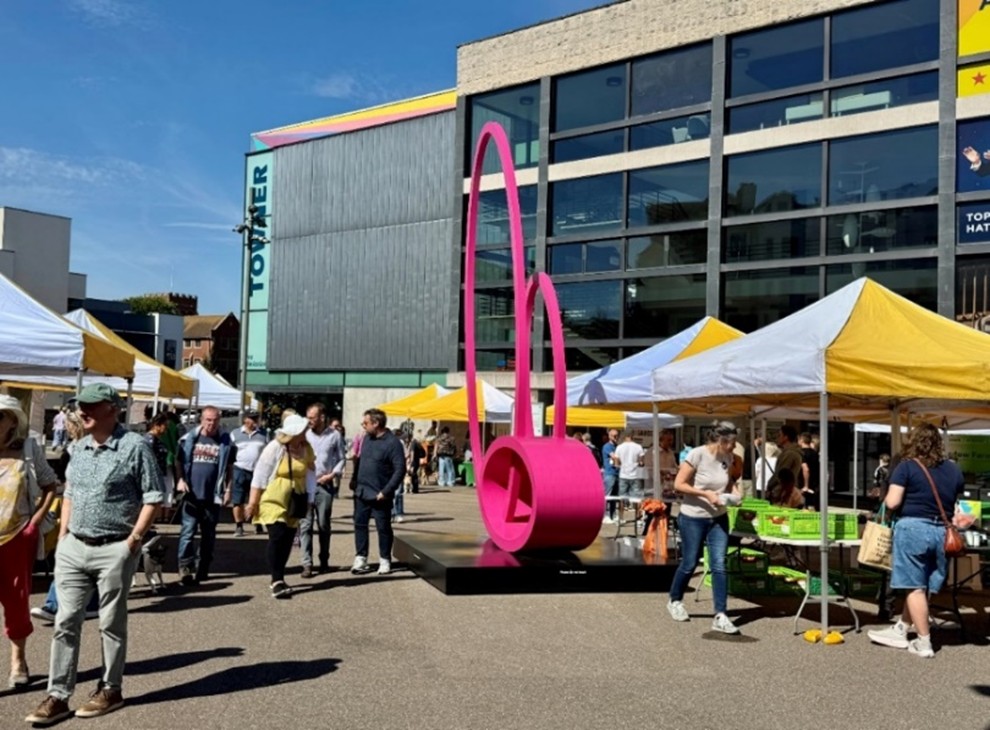
Visitors enjoying the Eastbourne Farmers Market as the day winds down, 6th September 2025, 12:45 pm.
From vision to reality
Sitting in the View Hotel, over a coffee, Andy and Miles tell me that the idea was to create a space where people could buy fresh, local, organic produce while actually talking to the people who produced it.
“Right at the beginning, we (representing the Eastbourne Food Partnership) had the vision: if we’re going to do a farmers’ market, do it properly,” says Andy. “Make sure it truly reflects the type of good food that is produced locally. So that we have truly sustainable, nutritious organic food and drink available.”
The market launched on the first Saturday in July outside Towner Eastbourne, and the response has been fantastic. What started with 14 stalls has grown to 25, with visitor numbers jumping from roughly 1,000 in July to roughly 1,500 in August.
Speaking to a couple of visitors in August, I heard how much they had enjoyed their visit. “It’s great to support the local economy,” one said when asked why they had come, specifically praising the local vegetable growers. Another mentioned picking up mushrooms, ciabatta bread, and mango-and-chilli ketchup, adding, “We’ll be coming back.”
More than just shopping
The market is more than a place to shop — it’s a chance to sample artisan breads, cheeses, baked goods, and drinks, pick up fresh seasonal produce, enjoy local honey and hot sauces, browse pottery and floristry, listen to live music, and more, all while connecting with community and friends.
Miles illustrated this social aspect when talking about his sister visiting the market: “It’s so lovely because she saw friends who she knows, used to go shopping with locally, but don’t anymore. So, it’s sort of like opening that possibility, which people think is very relaxed and very friendly.”
“It is the opportunity to talk to the grower, talk to the maker, [and] ask them questions about food or the produce.”
The market is the result of a collaboration between EFP, Towner Eastbourne, Eastbourne Borough Council (EBC), and Eastbourne BID (Business Improvement District), all working together, illustrating “how the collaborative process between groups and businesses can work in Eastbourne”, Andy states.
The core Eastbourne Farmers Market team are Andy, Miles, Luke Johnson, Operations Director of Eastbourne BID, Hannah Jordan, Head of Events at Towner Eastbourne, supported by EBC, and Trafalgar Theatres. As Miles says, “Working together in the project team is a joy with challenges overcome through genuine collaboration and positivity”.
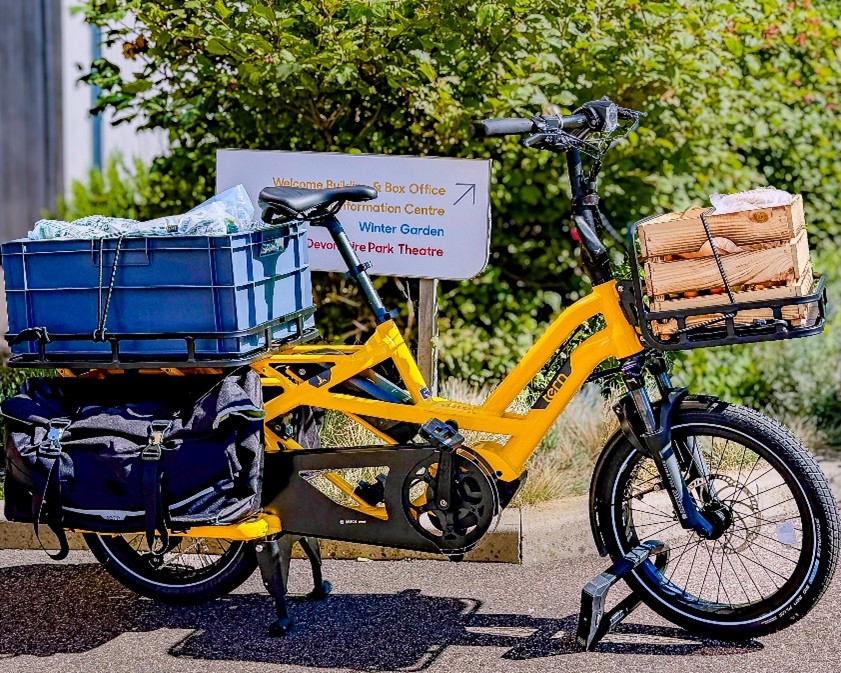
The EEAN e-cargo bike deliveries will be a regular feature at the market.
The spirit of giving and the local pound
“There’s something running in parallel to the market buying and selling, a community-building exercise”
Miles Berkley
Perhaps the most heart warming aspect is how stallholders have embraced a culture of giving back. Herons Folly Garden alone has donated more than 350kg of fresh produce to community fridges and food aid projects, like the Victoria Baptist Church, Old Town Community Larder, Seaside Community Hub, and the Trussell Trust Foodbank.
Other stallholders have also donated their surplus, like Barcombe Nurseries, Billington Mushrooms, and Mamoosh Bakery. After the market, surplus food is delivered by Eastbourne Eco Action Network’s (EEAN) e-cargo bike, partly funded by EFP, EEAN and a Neighbourhood Community Infrastructure Levy Fund administered by EBC.
Local restaurant Bombay Avenue’s Mozmil Hussain was also seen buying vegetables at the August market. Miles notes: “People love the fact that the pound is being kept, their expenditure is being kept in the local economy, being paid directly to the grower or to the producer without an intermediary. I think that’s very powerful.”
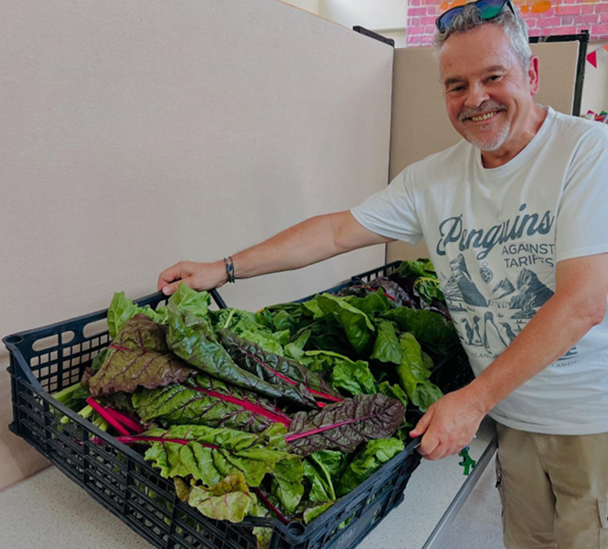
Miles with a donation from Herons Folly Garden. Photo from Miles.
Local and national challenges
Despite the early success of the Farmers’ Market and stallholders enjoying the chance to promote their produce, sell, and connect to other businesses, with many booking on for the remaining dates and providing positive feedback, local growers can face serious challenges.
“I think one [problem] is definitely financial and economic,” Miles notes. “Especially if you’re one of the smaller growers and producers. Earning a sustainable income producing food organically and regeneratively, it’s actually really hard.”
While supermarkets can afford to subsidise losses through other profits, as Miles explains, small local producers don’t have that luxury.
A 2023 study by Riverford Organic Farmers, Get Fair About Farming, surveyed “100 horticultural (fruit and veg) farmers, aged 18+, who are currently trading with supermarkets or have traded with supermarkets in the last five years.” They noted that almost half (49%) of those British fruit and veg farmers surveyed feared going out of business in the next 12 months, and “75% report that supermarket behaviour is a leading factor.”
As Riverford states, “Farmers live with constant uncertainty; never knowing what they will be paid or when, how much of a crop will be bought, or whether it will be rejected altogether.”
Additionally, the rise of cheaper imported goods from countries with lower standards has intensified pressure on local organic producers – challenges compounded by stagnant incomes for farmers since the 1970s, despite increased productivity.
“So many are doing the right thing, farming regeneratively, farming organically and taking a lot of care about what they do. The food system doesn’t necessarily reward them well for doing that. So, one of the things I’ve learned”, Miles continues, “is just a real admiration for what, especially the smaller-scale farmers and growers, are doing and their dedication to doing the right thing.”
What's next?
Organisers are already planning next year’s market. Miles informed me that a start date for season 2, in February, had just been agreed.
Plans are also being considered to enhance the market with more seating and possibly a café area, creating an even more social environment where people can hang out and connect, complementing the existing coffee and bakery stallholders.
Why this matters
At a time of relative disconnection from food producers, the market shows how collaboration between public, private, and community groups can build a stronger, more resilient local food network.
Buying local cuts packaging waste, reduces food miles, and supports sustainable farming — but the real magic of a farmers market is how it turns shopping into a social experience, rebuilding a sense of community.
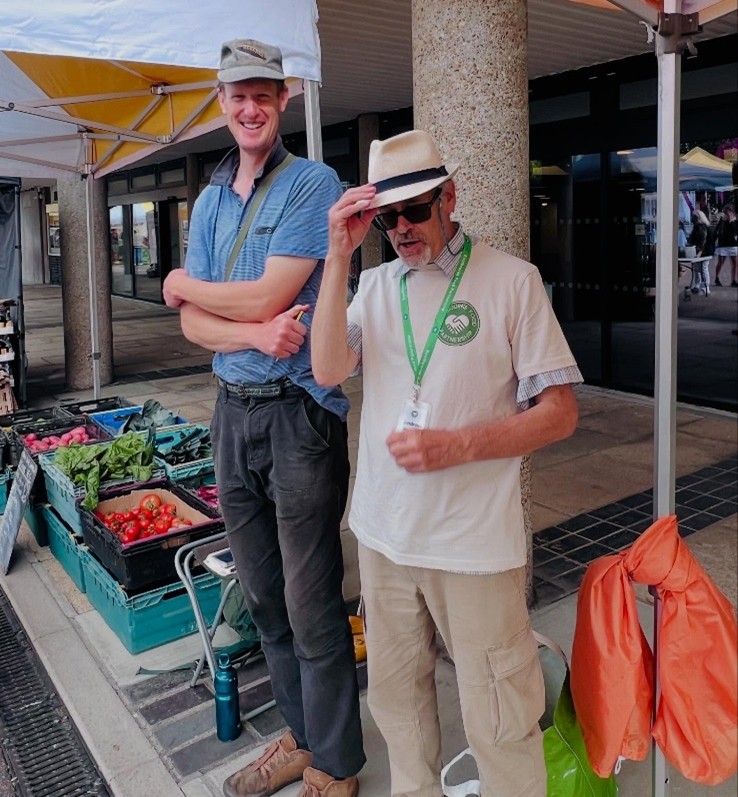
Tom from Herons Folly Garden with Andy. Photo from Andy.
When’s the next market?
The market runs on the first Saturday of every month, 9:30 am – 1:30 pm, in the square outside Towner Eastbourne. After polling the stallholders, it was agreed that a special Christmas Market will take place on Saturday, 13 December, following the November market.
The organisers invite everyone to experience the market — explore the fresh produce, chat with the growers, and enjoy Eastbourne’s growing local food culture.


